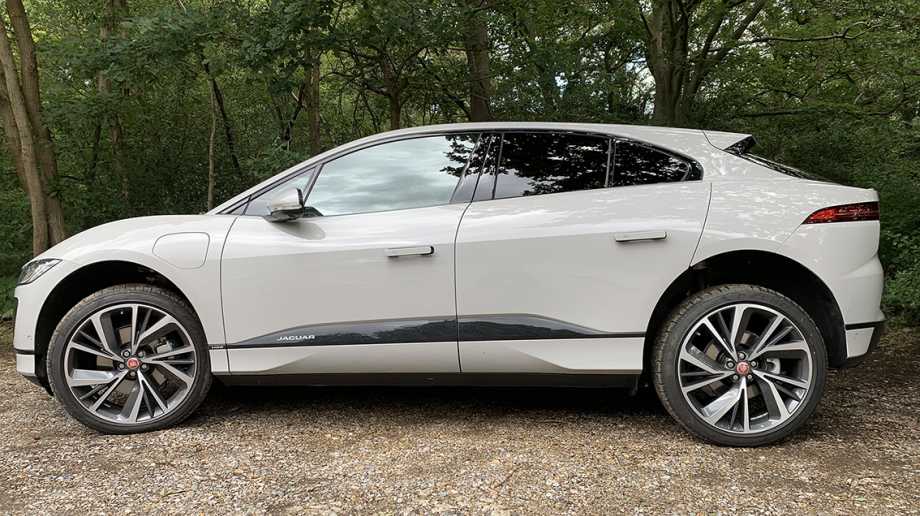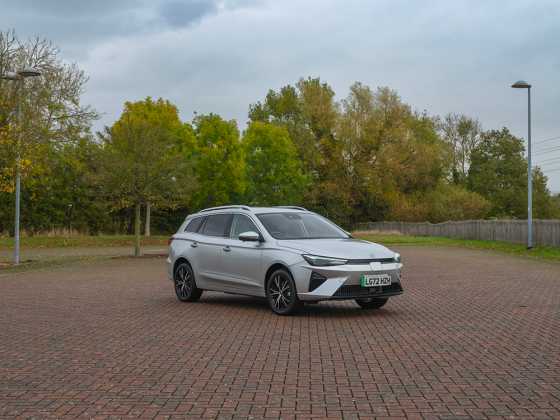Jaguar I-PACE

Its sporty performance, zero tailpipe emissions, long range, and premium-brand style has ensured the Jaguar I-PACE has made a big impact on the zero-emission car market
What is it?
The I-PACE is Jaguar's first electric vehicle and has made a big impression in the car market, having won 21 awards globally since launch in March 2018.
It's a mid-sized SUV that was designed from the outset as an electric vehicle. This meant that interior space was optimised by clever positioning of the battery and the exterior was sketched with aero-efficiency in mind.
With acceleration from 0-60mph in 4.5 seconds and a quoted range of 292 miles (WLTP), the I-PACE is practical, sustainable, and sporty.
How does it drive?
400PS and 696Nm of torque is available instantly when you put your foot down and it zips to 60mph incredibly fast. But it does so in a composed manner, due to its low centre of gravity and even weight distribution (the battery is placed centrally lowdown between the two axles), as well as being all-wheel drive. When at top speeds, the vehicle is self-assured and agile, giving you confidence behind the wheel.
The steering is very responsive, especially in Dynamic mode (the sporty mode). The car's adaptive cruise control with steering assist keeps the car in the centre of the lane and even steers itself, maintaining a set distance from the vehicle in front. This is a good tool for long distance driving. The steering wheel even has sensors in it, letting you know when there are no hands on it.
The air suspension allows you to lower the height of the car, which reduces the drag, and therefore improves efficiency and range.
There are two regenerative breaking settings, with the highest providing a good return of power back to the battery. However, in order to change this, you have to go through the system settings rather than being able to change with the flick of a paddle like some other vehicles.
The cabin is a nice place to be with the panoramic roof making it feel very roomy. In the rear, legroom is 890mm while and there is tablet and laptop storage under the seats, while the rear luggage compartment offers a 656-litre capacity.
The I-PACE has earned a five-star Euro NCAP safety rating and features numerous advanced safety technologies to protect road users and pedestrians.
What range does it have?
The I-PACE's 90kWh Lithium-ion battery is said to deliver a range of up to 292 miles (WLTP), although we were getting an average of 200 miles.
The eco-meters on the dashboard give you instant feedback on your acceleration, breaking and steering. They worked well as subliminally I was always looking to keep all five green bars to improve my overall M/kWh.
The I-PACE has range-optimising technologies including a battery pre-conditioning system: when plugged in the I-PACE will automatically raise (or lower) the temperature of its battery to maximise range ahead of driving away.
Cleverly, a heat pump can take energy from the outside air to reduce the amount of battery energy used by the climate control system. It can even utilise heat generated by the propulsion system to warm up the cabin, further reducing demand on the battery.
To help you feel more confident about the car's range, the EV navigation system assesses the route, inclines and all, and uses it with insights from previous journeys and driving style to calculate personalised range and charging status.
How long does it take to charge?
Home charging with an AC wall box (7kW) will achieve 0-80 per cent battery in ten hours, so it's best to do it at night. With DC rapid charging (100kW) it can get to 0-80 per cent battery charge in 40-minutes.
Why does my fleet need one?
Full with premium-brand style, together with sporty performance, zero tailpipe emissions, and a good range, the Jaguar I-PACE will be a popular company car if the lofty price tag of £60,995 (including PiCG) is acceptable.
Being an electric vehicle, the plug-in grant of £3,500 can be used. It is tax free in the first year of registration, but as it attracts 'Premium Rate', from year two to six it will command a £320 charge. The I-PACE however is in the lowest 16 per cent band bracket for Benefit in kind. Thanks to the recent review of company car tax, from 2020-2021 onwards there will be no company car tax, from 2021-2022 it will be one per cent, and the year after that, BIK will be two per cent.









